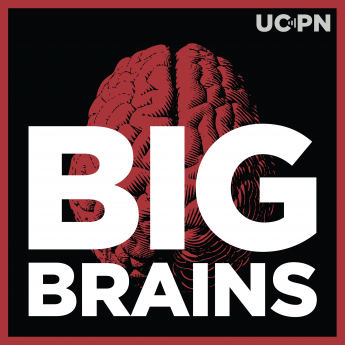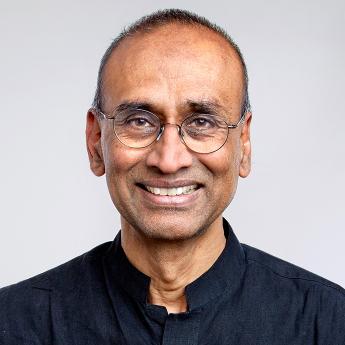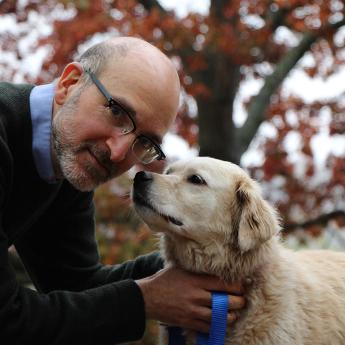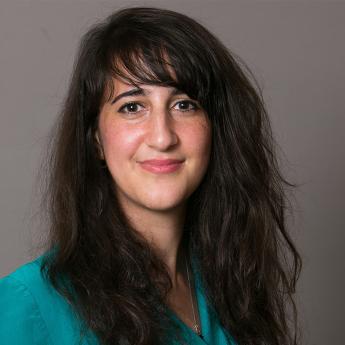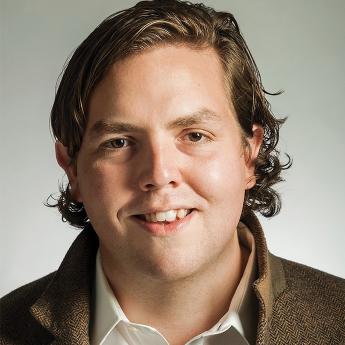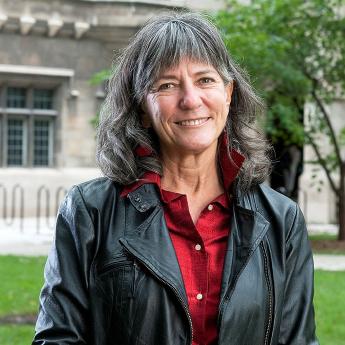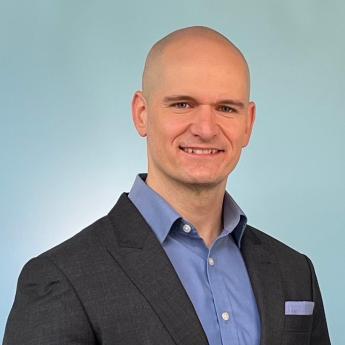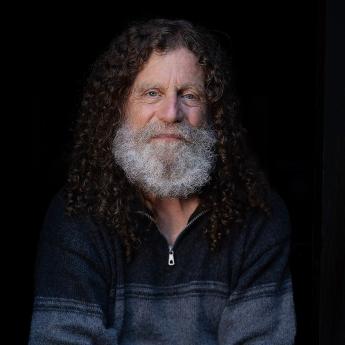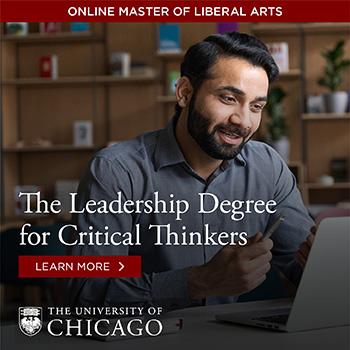Show Notes
Reading is one of the most significant practices in the modern age of information, but it has a complicated history. Scientists began studying reading over a century ago; they built eye movement devices to study how fast and efficiently we read, and even proposed methods on the best ways to teach kids how to read. But all of this well-intentioned science led to various debates, from America's Reading Wars to today's anti-elite and anti-science movement.
In a new book, The Science of Reading: Information, Media, and Mind in Modern America, Prof. Adrian Johns, chair of the Department of History at the University of Chicago, dives into reading's complicated history and what we can learn from it to better shape the future of reading.
Subscribe to Big Brains on Apple Podcasts and Spotify.
(Episode published August 24, 2023)
Subscribe to the Big Brains newsletter.
Please rate and review the Big Brains podcast.
Related:
- Learn more about The Science of Reading: Information, Media, and Mind in Modern America (UChicago Press)
- An Encouraging Nature—Inside Higher Ed
- The Most Mysterious of Arts: On the Science of Reading—Lit Hub
- There Is No Right Way to Read—Time
- The Evolving Science of How We Read—Education Next
- Are we forgetting how to read?—Financial Times
Transcript:
Paul Rand: The last few years, a cultural war has overtaken American society and the latest victims in that fight are books
Tape: Around the country, efforts to ban specific books or even whole categories of books are on the rise.
Tape: According to Penn America from July of 2021 through March of 2022, there were nearly 1600 actions taken in school districts to ban more than 1100 titles.
Paul Rand: This may all seem like a modern phenomena, but it actually has a much longer history than you may realize. In fact, that history may actually explain the very roots of our current anti-elite anti-science movement.
Adrian Johns: Pretty much every parent of a school child in America will be familiar with this. The fight over this is what sometimes gets called the reading wars, and it’s been going on since the fifties.
Tape: What has happened to American education? Who’s behind this attack on our children and what can we do about it?
Paul Rand: The reading wars, it was a debate stretching back to the fifties among parents and scientists about the best way to teach kids how to read.
Speaker 4: If people are not going to be able to read, how are we going to handle the so-called age of information?
Paul Rand: Should they be taught in whole words or through phonics?
Phyllis Schlafly: Basically this trend called outcome-based education is galloping across the country despite the opposition of parents.
Adrian Johns: This was a moment when the claims of science were contested very publicly.
Phyllis Schlafly: And it is wholly dependent on a system of teaching reading that is called whole language.
Adrian Johns: And that this should go along with a new public skepticism about the authority of science itself.
Paul Rand: That’s Adrian Johns, Professor of History at the University of Chicago and the author of a new book called The Science of Reading: Information Media and Mind in Modern America.
Adrian Johns: What you see here is the beginning of a very widespread sort of demonic opposition to what is seen as highfalutin ivory towered, excessively abstract, and possibly corrupt scientific authorities.
Paul Rand: Perhaps it is no coincidence that our modern anti-science movement can trace its roots back to a debate about all things reading. It’s something most of us do every day, so it can be easy to forget that the stakes to understanding how and why we read are really high.
Adrian Johns: I think that there are specific things about reading that make it vital, the civic responsibility that comes with reading, and I believe in that and I think that’s still relevant, still necessary, almost more necessary in a world which is mediated by the internet and where even more than the 19th century, we’re facing kind info saturation all the time.
Paul Rand: The first scholars to study reading were not driven by a neutral curiosity. They believe that the very foundations of society and democracy depended on the public’s ability to read and the history of their discoveries, the reading wars and the neuroscience of reading all give us fascinating insights into our individual minds and the mind of our society.
Adrian Johns: Actually, this came into my head because I live about 10 minutes from the Lakeside in Chicago, and this morning I cycled out to the lake and there’s a pedestrian tunnel that goes out to the lakeside there under Lake Shore Drive, and somebody’s put up a big piece of graffiti in this tunnel and it’s three lines written out in red and it goes, “First you learn to read, then you read to learn, then you overthrow the settler capitalist system.” And there’s a sense in which it’s a joke, but it captures something about the power that reading is felt to have at least. And I think that the current efforts to ban books are really further evidence of the power that reading is thought to have.
Paul Rand: Welcome to Big Brains, the podcast that translates the biggest ideas and complex discoveries into digestible brain food. Big brains, little bites from the University of Chicago Podcast Network. I’m your host Paul Rand, on today’s episode examining what happened to the science of reading.
Well, part of the history that you talk about is the importance of reading to create and maintain a democratic society, and I wonder if you could just maybe kick us off by talking about how scientists saw the connection between democracy and reading and why they were so concerned about it. And it probably gets a little bit to why a historian has written a book like this.
Adrian Johns: Yeah, absolutely. This was a big question at the end of the 19th century, beginning of the 20th century, and you have to kind of think yourself into a world of really rapid industrialization and networking with the development of things like railroad networks and big industrial capitalism and the growth of new kinds of information medium. So the tabloid press really begins roughly late 19th century and the rise of a marketing industry as well, which is just starting in this period. And there’s a sense that people have that more than ever before, they’re just kind of saturated with press, with text of one kind or another. And at the same time, this is the first generation that really has something like a universal male suffrage democracy. And so those two things come together and they create a big question, which is how do you sustain the ideal and practice of a democracy with an informed citizen population voting for its leaders in the context of this moment of extraordinary media upheaval?
Paul Rand: But early scientists were faced with a difficult problem, how do you scientifically study something subjective like reading? What data could you collect and how would you even measure it?
Adrian Johns: The first thing you need to understand is what actually happens to you when you read something. And this is a question that really has a pressing valence in this period because this is the first era when people are trying to use experimental lab techniques to understand human behavior, human psychology, and for the first time you actually have the tools that might allow you to do that.
Paul Rand: Enter Edmund Huey, he invented an ingenious device called an eye movement tracker. Scientists could use this device to track how people’s eyes were moving across text.
Adrian Johns: They found pretty early on that if you measure the rate at which adults read, especially good adults, so some of the experimental subjects here were people like John Dewey, for example.
Paul Rand: Who founded the lab school?
Adrian Johns: Yes, exactly. You find that they are able to recognize sequences of characters faster than the individual characters that make up that sequence. So if you see a phrase like once upon a time, it looks like what’s happening is you pull in that whole thing as a kind of pattern immediately, like in a very small period of time. Whereas if you read the individual characters, it takes you a lot longer. So one of the thrusts of the science of reading in practice was to try to train people to do that better, to recognize patterns and to take those in faster. And the thought was if you could train people’s eyes to move across the page with fewer stops and so they hop from pattern to pattern, they’ll do the process quicker and then they will be faster, more effective, more powerful readers.
Paul Rand: We actually ended up, and I remember this being younger, that the focus on speed of reading, the products, the offerings, the focus on how fast do you read and speed reading courses became very prevalent and talk about that period and what that gave us or took away from us.
Adrian Johns: You’re right, this is a very prevalent theme, right? How do we get people to read faster? And one of the questions actually is whether there’s a natural limit to that in the mid 20th century. We now think that there is, but in the mid 20th century, there were people who are seriously arguing that there might not be and that you might in principle read 10,000 characters a second or something.
But it goes back to this notion that we’re subjected to a slew of texts all the time around us in our environment, and the idea is that in order to be masters of that, we need to be able to respond to it really fast, otherwise we’re always just playing catch up. So there were all kinds of techniques in the mid 20th century to try to get people to do this, which you probably encountered with the speed reading movements.
Paul Rand: The public interest and speed reading started to get noticed by business leaders and they saw an opportunity to sell the techniques that scientists were studying in the lab to the masses.
Adrian Johns: Right, these became a huge business.
Adrian Johns: And there are various techniques for it. I mean, one of them is a machine called an accelerator, and what it is like a little window that moves down the page line by line as you read, and it obscures the page. So the idea is that you have to read fast, otherwise you’re going to lose access to the text, and the idea is that it trains you almost in the way that an athlete trains.
Tape: Make yourself a super reading machine with a speed reading hand video program. Learn to read three to five times faster with better comprehension.
Adrian Johns: So there are various techniques like that that are used and as I say, it becomes a really widespread thing. So John F. Kennedy famously, for example, took one of these classes.
Tape: Imagine how much time you’ll save when you read books, magazines, and newspapers in a fraction of the time. For business, school or pleasure. Anyone can release their super mega reading ability.
Paul Rand: And so I guess the question is, does this pull out that being a slow reader is a bad thing?
Adrian Johns: That depends. Certainly it was thought to be a bad thing and as I say, now we think that there actually is a kind of natural limit, which is roughly about 300 words per minute. Beyond that, what you are doing is basically hopping over large parts of text. So you are skimming.
Speaker 6: Now unlock your natural ability to quadruple your reading speed and remember everything you read
Paul Rand: As the public started to realize that these speed reading products didn’t live up to the hype, they felt lied to by scientists.
Adrian Johns: Now I think it’s accepted that you can’t categorically say that reading slower means that you are less intelligent or something like that.
Paul Rand: If the failures of the speed reading craze lit the match for the reading wars, the megaton bomb it was attached to actually goes all the way back to the very first discovery that came from the eye movement device.
Adrian Johns: As the scientists found out back in the 19th century, skilled adult readers read faster and better by focusing on recognized patterns. And so the idea is that maybe what you need to do is jump over the whole thing about teaching people individual characters and get them from the beginning to recognize patterns. In the extreme, you don’t teach character recognition at all.
Paul Rand: But historically then the whole word method was really where we leaned back in the fifties. Is that right? And that’s where the whole concept of books like Dick and Jane and others came from.
Adrian Johns: Yeah, basically. And so Dick and Jane is a great example. It was the invention of an experimental psychologist at the University of Chicago, actually William Gray.
Paul Rand: Oh, interesting.
Adrian Johns: And they sort of set out the pages of these books with the intent to try to produce in the next generation of children the kinds of eye motions that they were seeing in their laboratory instruments from skilled readers in the 1920s. So a whole generation, more than one generation of children was taught to read this way by these techniques.
Paul Rand: Although this was certainly the most prevalent view of scientists, not everyone agreed that this was the best way to teach children.
Adrian Johns: But then in the fifties, there’s a reaction against this in the wake of a famous book by Rudolf Flesch called Why Johnny Can’t Read, which is actually a really powerful polemic arguing that whatever this technique of training by whole words is doing, whatever it’s doing, it’s not telling people how to read as Flesch points out I think rightly actually. If all you recognize are whole words like cat and so forth, when faced with new words, you can’t work out what they mean from just the characters themselves.
Paul Rand: Rudolf Flesch believed that in order to create that ideal literate democratic society, we needed to teach kids using the phonics method. So what is phonics?
Adrian Johns: Phonics is the opposite. It’s the idea that all reading at root is the passing of individual characters and moreover, the passing of those individual characters as sounds. So you sound things out literally. That’s what real reading is for the phonics advocates and everything else is kind of an application of that. And sometimes you’ll find people saying that it’s even the case that really skilled readers, while they may think that they’re looking at whole patterns like once upon a time, are actually doing the sounding out just really, really fast.
Paul Rand: Every war has at least two sides, and these were the camps and the reading wars, those who advocated for the whole word method, the one most researchers believed worked best and those who felt the scientists were wrong and that phonics was the most obvious best method.
Adrian Johns: The fight that Flesch started really ballooned in the late fifties and one of the things that caused it to explode was actually Sputnik.
Tape: It’s a report from Man’s farthest frontier, the radio signal transmitted by the Soviet Sputnik, the first manmade satellite as it passed over New York earlier today.
Adrian Johns: When Sputnik flew over the United States, it was really a dramatic demonstration of the potential of science and technology to shape the future of geopolitics.
Tape: Sir, what do you think about this achievement of the Russians?
Tape: I think it’s a remarkable thing. My only regret is that we couldn’t get there at first.
Tape: It’s frightening. We should find out what they’re doing that we’re not doing and we should do something about it very quickly.
Adrian Johns: And pretty much that day, Congress mandated putting in huge investment into public education programs program,
Tape: Our survival may depend on degrees and graduates. We are not now equipped to produce. The decade ahead is one of critical decision. Expand, improve, support, urges the committee, expand everywhere and now.
Adrian Johns: The idea was that you needed to create now a whole new generation of scientists rival this, but in order to create a generation of scientists that first you need to do is you need to create a population of readers and they’re very aware that literacy is a scandal, literacy is a scandal, so they decide to throw money at it. That balloons the whole fight about how you teach reading because for the first time it’s all being done at a federal level, right? So huge amounts of money and programmatic power at stake.
Paul Rand: Once the government and taxpayer dollars started getting involved in the science of reading, it was only a matter of time before things got political in the eighties and nineties.
Sam Blumenthal: It is one of the highest arts of American education to produce a true, functional illiterate. Very expensive.
Paul Rand: Many government programs look to the scientists for answers about how best to train kids to read. At the time the whole word method prevailed among researchers, so that’s what they followed.
Sam Blumenthal: This whole thing smells so fishy because you see, after Rudolf Flesch wrote his book in 1955 and explained what was wrong, nothing changed. The schools went on doing what they were doing. And so I got to the very beginning and I found out that all of this was started by a group of educators who were called the progressives.
Paul Rand: And as states like California began to require it be taught in schools, conservative voices like Sam Blumenthal started to link the theory to the “Socialist left.”
Sam Blumenthal: Well, of course that meant that they had to change the curriculum in the schools because the curriculum that existed then was sustaining the very system that they loathed and hated and said had to be done away with.
Paul Rand: Meanwhile, phonics became a rallying cry of the right, especially by leading conservative voices like Phyllis Schlafly.
Phyllis Schlafly: At least 85% of the schools do use this type of a guessing game. The sight-reading that’s sometimes called sight-reading, whole word, look and say, Dick and Jane, it all means the same thing. And now they try to call it whole language and to tell you it means that the child is going to be given great literature or it’s not great literature or you can’t read great literature unless you can read big words by sounding out the syllables.
Paul Rand: They claim that just like the special reading debacle of the eighties, the scientists were wrong, perhaps even nefarious in their intentions
Sam Blumenthal: Because they considered high literacy to be an obstacle to socialism. You see, in a socialist society, you have an elite at the top that rules over everybody else, and so they want everybody to be dumber than they are.
Paul Rand: But this time it wasn’t just a defective product, it was the education of their children.
Phyllis Schlafly: We had a nation in which it was the norm for families to teach their own children how to read. We had a nation of mostly farmers, but they could all read, long books with big words like those written by James Fenimore Cooper and Nathaniel Hawthorne had enormous sales in our country. People were motivated to teach their own children because they wanted them to be able to read the Bible.
Paul Rand: This was the beginning of the homeschool movement, the parents’ right movement, the start of a distrust of elite institutions, an entire political coalition rallying against the scientific establishment,
Phyllis Schlafly: And it’s so important that children be taught to read the right way before they are taught the wrong way with guessing methods in the school.
Adrian Johns: It’s not just Flesch, there’s actually a number of critiques of the science of reading at this point. They’re explicit in saying that the answer to what is presented as being a spurious science, a spurious and corrupt science, is for American citizens to become their own critical experimental scientists. It’s almost a kind of Jeffersonian ideal.
Paul Rand: Which arguably set the foundation for some of this anti-science, anti-elite populist movement that we found ourselves in today, doesn’t it?
Adrian Johns: I think so because the skepticism that you see with respect to things like climate science has partly been actually manufactured to a certain extent, Naomi Oreskes at Harvard has argued, you’re probably aware of the book called Merchants of Doubt, right? In other places. So it’s partly been manufactured partly in the name of what she calls simulacrum science, which is a kind of artificial astroturfy scientific enterprise with its own journals, its own peer review and that kind of stuff, but premised on anti-climatology principles. We have to ask ourselves, why was it that something like that had such public purchase? And I suspect, I mean this is not something that really can be proved completely, but I suspect that the reason why it had such purchase was that large amounts of the American population had been given already terms, language, concepts in which to think about a body of scientific experts that was seen as almost conspiratorial against the public good. And that’s what the reading war did.
Paul Rand: Once politics got its hooks into the scientific discussion, it divided everything into two camps with stark dividing lines. But of course, the reality isn’t so black and white.
Adrian Johns: Nowadays, the neuroscientists are pretty emphatic that at least at the beginning, phonics is the way to go, that you don’t want to be teaching just whole patterns right from the start. Once you get into the realm of more skilled readers, though, it’s not so clear that continuing to focus on just the individual passing of particular characters is really fruitful. I mean, you do have to move on to more sophisticated techniques after that, but it seems pretty clear from the current science of reading that yeah, right at the beginning, elementary school, you need to push children through that process of understanding the sounds of individual characters and how to make words out of them.
Paul Rand: To this day, arguments in favor of phonics get coded as conservative and considering the progressive left’s focus on class inequality, there’s a tinge of irony that the original push for phonics was concerned with the very same problem.
Adrian Johns: One of Flesch’s points is that in effect, the whole word technique was classist because rich middle class families, they would go through this at school, but at home they would have a rich home life with lots of books, parents would read to children and so on and so forth. So the children would learn what they would otherwise learn in a phonics program by virtue of their cultural situation. But poor children didn’t. So poor children end up being robbed of future citizenship. You’ve seen right now a number of state legislatures that have been mandating phonics instruction in elementary schools. The best known example is Mississippi.
Speaker 14: Mississippi went from being ranked the second-worst state in 2013 for fourth grade reading up to 21st in the nation last year, education leaders thank recent laws that emphasize phonics and early screenings for struggling kids. But the country has taken notice of what some have called the Mississippi Miracle.
Adrian Johns: And this kind of argument that not teaching phonics is bad for minorities, poor, that kind of argument weighs very powerfully in that situation.
Paul Rand: Now, tie this to me because this is also a period where the expansion of libraries really came in too, isn’t it?
Adrian Johns: Yeah, so all the way through these decades, the library system actually more than things like bookstores are seen as the source of literate materials for many people in the population. And this goes back to the late 19th, early 20th century with Carnegie Foundation and the setting up of lots of public libraries around the US.
But in the twenties and thirties, alongside the science of reading, there was also launched a different scientific discipline called library science, which was going to be the science of fitting materials to readers in a way that’s both culturally responsive and culturally improving at the same time. This goes on through the forties, fifties through the Civil Rights era. One of the big battles in the Jim Crow period in the South was to desegregate library systems as well as schools for very much this kind of reason. So one of the things that the library scientists did was literally to map information access around the country, and they produced actually an extraordinary book called The Geography of Reading in the mid-thirties, which is mainly composed of about 100 maps of North America, which are the kind of color coded that’s showing things like the number of libraries in a community across the whole country, the number of bookstores in the community, the number of radios in the community, the number of subscriptions to Readers Digest, all these kinds of things.
And you’re supposed to almost literally flick through this book like a flick book. And what it shows you in incredibly stark graphic terms is that the states of the Old Confederacy are intellectual deserts. That visual technique created a big push to equalize the provision of libraries across the country and across races in particular. Now, it took a long time to happen. In some ways it hasn’t happened even now. You can see this becomes a thread in the Civil Rights campaigns of the sixties as well. The fact that you could actually show this using real data, using these graphic techniques in the mid 20th century as a piece of real hard social science, I think was really important in helping to mitigate and then bring to an end a sort of informational Jim Crow system that used to exist.
Paul Rand: In the past 20 years, reading research has turned, as many fields have, to neuroscience. But as new mediums like video, social media and audiobooks have become more and more prevalent, the question of what the future of the science of reading should be seems more important than ever. That’s after the break.
If you’re getting a lot out of the important research shared on Big Brains, there’s another University of Chicago podcast network show you should check out. It’s called Not Another Politics Podcast. Not Another Politics Podcast provides a fresh perspective on the biggest political stories, not through opinions and anecdotes, but through rigorous scholarship, massive data sets, and a deep knowledge of theory. If you want to understand the political science behind the political headlines, then listen to Not Another Politics Podcast, part of the University of Chicago podcast Network.
Big Brains is supported by the University of Chicago Graham School. Are you a lifelong learner with an insatiable curiosity? Join us at Graham and access more than 50 open enrollment courses every quarter in literature, history, religion, science, and more. We open the doors of UChicago to learners everywhere, expand your mind and advance your leadership. Online and in-person offerings are available. Learn more at graham.uchicago.edu/bigbrains.
So if we start coming into, for lack of a better word, the modern era, we start getting into thinking about neuroscience, and it’s interesting on a recent Big Brains episode, we really talked about your brain and music and some of the ties to get into it on neuroscience, and so help us understand a little bit the neuroscience of reading.
Adrian Johns: Yeah, this too has gone through iterations. So early neuroscience before we had things like fMRI scanners, people were trying to read brainwaves and things like this back into the thirties and forties, when modern scanning really started, the idea was almost as in a way analogous to genetics actually to look for particular locations in the brain that might light up when people read or when people read different texts, that kind of thing. And it was found very loosely that that’s true, that there are areas in the brain that do light up when you do reading, when you do pattern recognition, that kind of thing.
But the bigger issue seems to be that really what happens when you read is not that some particular location lights up, it’s that the brain forms connections. Those connections are structured by habit. So in this way, one of the things that neuroscience teaches us is that the brain is not like a fixed entity, it changes by virtue of experience and especially by virtue of habituated experience, as the scientists will say, there’s neuroplasticity.
One of the things about that which I think is really interesting is that it means that where the neuroscience gets to at a certain point is to tell us that neuroscience itself is not enough, right? You need to also understand the cognitive science of how you come to think with what you read and the behavioral science of how you read, and even those old things like eye movements to a certain extent. And that how people come to practice reading habitually actually affects the neuroscientific, as it were, grounding of reading itself.
And there are people who will say that this actually has an evolutionary component to it, that what happens as populations of people read in different ways. So for example, as we move away from printed pages and we read on screens, or we read like Twitter as opposed to Moby Dick, that the propensities, the affordances of human neuroscientific circuits are actually prone to alter, which is one reason why it’s said that, and I agree with this actually, we need to think about, as it were, self-discipline techniques, how to discipline ourselves so that we’re not simply responsive to screen texts all the time. We take ourselves offline, we stop, and we reflect and we go backwards, all these kinds of things. These actually have a real somatic effect on what our brains are like and how they work. So I think that’s the interesting part of where the neuroscience takes us now.
Paul Rand: So if you’re a young parent, and of course everybody relates what they hear and think to themselves, if you’re a young parent and you’ve got kids that are actively learning to read, what are you telling them?
Adrian Johns: Well, the first thing is do teach them to read. So I have four children who are now teenagers or older, back when they were that age, I mean, this is a slight oversimplification, but as parents, we were more or less told, “Don’t teach children to read. They will pick it up themselves by osmosis,” which was a version of the kind of pattern recognition thing. I think that’s wrong. Teach children to read, teach them in the beginning with phonics, then move beyond it though. Once they’ve got the phonics part of it, then it becomes a much more sort of cultural exploratory adventure, cultivate to whatever extent you can or may not even need to actually cultivate children’s sense of being cognitive explorers, problem solvers in the way that the cognitive scientists tell us about. So I remember one of my children picked up the first Harry Potter book, which if you remember it is like three inches thick.
Paul Rand: Yes, I remember.
Adrian Johns: Started at the first sentence with the first word on the first sentence, and pretty much taught herself to read out of sheer determination to understand what was going on in Harry Potter. There’s that part of it that’s going beyond the phonics, but I would start with phonics certainly.
Paul Rand: Let’s build on this point a little bit more because again, you’re saying that ability to read is a primary component of having a functioning democracy. There’s not too many people that would disagree that we are struggling of having a functional democracy right now. As you look at that, where does that take you in your own mind, and do you look at it and say, “Well, I know what the problem is”?
Adrian Johns: Yeah, I’ve got the answer for you. No, no. In principle, you might be able to imagine a modern world or maybe a future world in which you had a lasting tradition of freedom and liberal democracy that was based on different kinds of informational exchange, right? Visuality, audio, something like that. You could imagine that happening. And actually again, if you go back to the late 19th through mid 20th century with the invention of things like radio, there were people who actually proposed that you might do this, that you might simply abandon the ideal of creating a literate democracy and jump straight to something like an electronically mediated democracy. But there’s a thing about reading where you were able to take advantage of what the French called the [inaudible] the layout of text on the page that allows you to go back to a sentence to reconsider what it meant, to consider it in the light of later sentences in a way that you can’t really with movies or TV or video or audio. And that is part and parcel of this kind of civic responsible work.
It’s like just as the people in about 1910 were struggling with this new world of tabloid newspapers and telegraphy and all of that, and the teaching system, it was thought, was teaching people for an older world where everything was slower. It’s like we are in a parallel situation now, we’re unsure now of what basic ground level information exchange is in terms of which to see all of the various media interactions that we have, and we haven’t quite come up with a way of training the next generation, educating the next generation to be masters of what will be a much less reducible environment. So they’re going to be dealing with very fast texts, but also Moby Dick and very complicated technical manuals and things like that without the sense that there’s a kind of hierarchy there that I think we took for granted, people in my generation took for granted for a long time.
We need to be much more active about habituating people at an early age, so before I would say something like 7, 8, 9 years old, to see reading as different things and to give it different affordances and to habituate people differently to the different exposures that they have. At the moment my own sense, and this is just anecdotal from my own children and the children and friends of mine, is that it seems like that’s not being done. The schools rely on digital media to assign work, to have people submit work, and so on and so forth. What that means is that the experience of learning at school is basically kind of hijacked because you’re sitting at this device that is flooding you with TikTok and Discord and all of these things at the same time, and there isn’t a sufficient system, convention for making people sort of medtronic masters of this.
Matt Hodapp: Big Brands is a production of the University of Chicago Podcast Network. If you like what you heard, please leave us a rating and review. The show is hosted by Paul Rand and produced by me, Matt Hodapp, and Leah Ceasrine. Thanks for listening.
Episode List
Why we die—and how we can live longer, with Nobel laureate Venki Ramakrishnan (Ep. 134)
Nobel Prize-winning scientist explains how our quest to slow aging is becoming a reality
What dogs are teaching us about aging, with Daniel Promislow (Ep. 133)
World’s largest study of dogs finds clues in exercise, diet and loneliness
Where has Alzheimer’s research gone wrong? with Karl Herrup (Ep. 132)
Neurobiologist claims the leading definition of the disease may be flawed—and why we need to fix it to find a cure
Why breeding millions of mosquitoes could help save lives, with Scott O’Neill (Ep. 131)
Nonprofit's innovative approach uses the bacteria Wolbachia to combat mosquito-borne diseases
Why shaming other countries often backfires, with Rochelle Terman (Ep. 130)
Scholar examines the geopolitical impacts of confronting human rights violations
Can Trump legally be president?, with William Baude (Ep. 129)
Scholar who ignited debate over 14th Amendment argument for disqualification examines upcoming Supreme Court case
What our hands reveal about our thoughts, with Susan Goldin-Meadow (Ep. 128)
Psychologist examines the secret conversations we have through gestures
Psychedelics without the hallucinations: A new mental health treatment? with David E. Olson (Ep. 127)
Scientist examines how non-hallucinogenic drugs could be used to treat depression, addiction and anxiety
Do we really have free will? with Robert Sapolsky (Ep. 126)
Renowned scholar argues that biology doesn’t shape our actions; it completely controls them
A radical solution to address climate change, with David Keith (Ep. 125)
Solar geoengineering technology holds possibilities and pitfalls, renowned scientist argues


